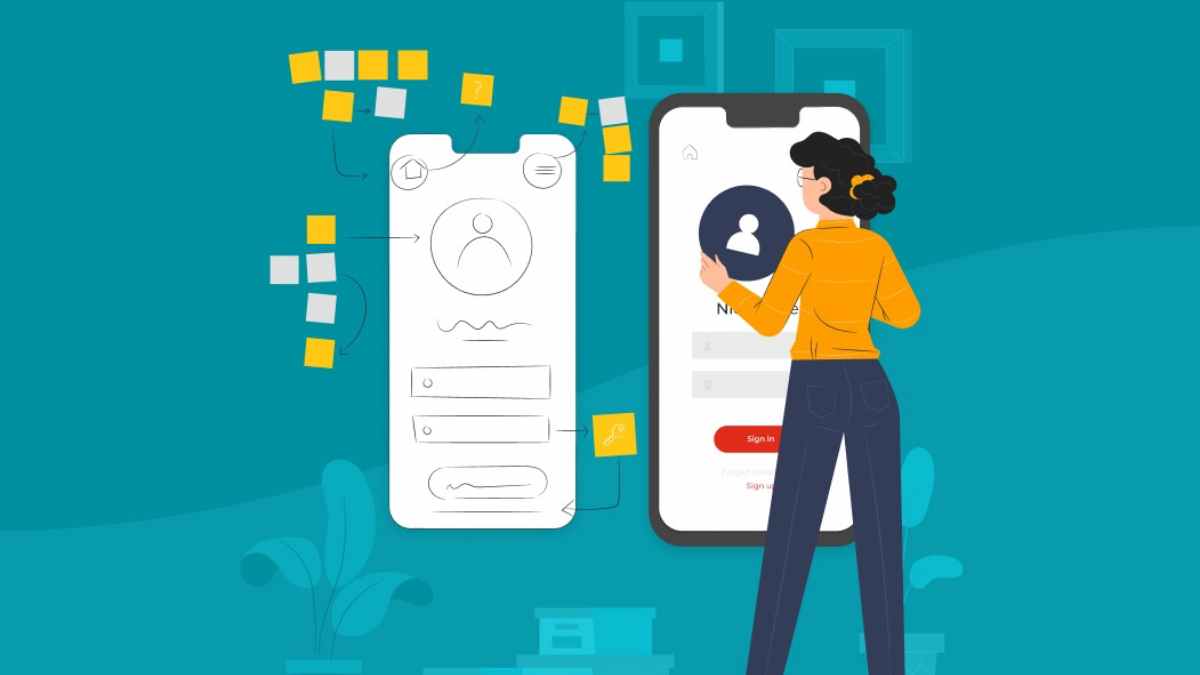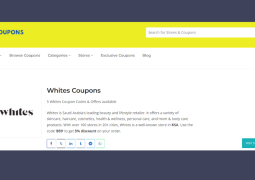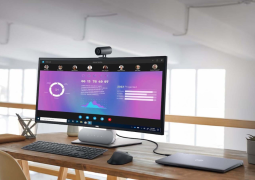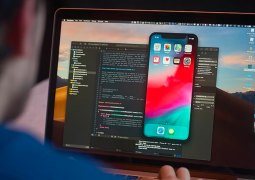How To Develop An App (in 2023)
by 19/03/2023 16:370

If you want to develop an app that crushes it in 2023, you need to get serious about strategy and planning. This isn’t amateur hour; it’s a game of high-stakes chess, where only the savviest survive.
So?
Aspiring app developers must stay on the cutting edge of technology, while also keeping a finger on the pulse of user needs and expectations. It’s a delicate balancing act, but one that’s well worth it for those who succeed.
These are the steps for anyone looking to tackle this daunting challenge head-on.
Pre-Development
Picture this:
Developing a successful app is like embarking on a treacherous journey through uncharted waters. To navigate the murky depths of the app world, one must first chart a clear course. This means taking critical steps before setting sail, like defining the idea, understanding the target audience, surveying the competitive landscape, and establishing a clear roadmap for the project’s execution.
Let’s take a deep dive into the nitty-gritty:
Define The App Idea And Purpose
You need to know exactly what problem it’s solving and why anyone would want to use it. Sadly, this is where most people trip up and fall flat on their faces.
It gets worse: Without a clear and compelling idea, you’re just wasting your time and money.
So take the time to get it right and make sure that idea is top not. Trust me, it’ll save you a lot of heartache down the road.
Here’s your to-do list:
- Brainstorm the app idea and write it down in a clear and concise statement. For example, “Our app will help busy professionals organize their daily tasks and increase productivity.
- Determine the primary and secondary goals of the app. This means identifying the specific outcomes the app should achieve for its users. For example, the primary goal of a task management app might be to increase productivity, while a secondary goal could be to reduce stress and improve work-life balance.
- Create a list of “proposed” features and functionalities that support the app’s primary and secondary goals. For example, the task management app might include features such as customizable to-do lists, progress tracking, and reminders.
- Determine a tangible unique selling point of your app. What sets it apart from existing apps in the market? Why should someone choose your app over others? Perhaps it could be that it integrates with other apps/services or that “it is for everyone.”
- Get Your CTO Hired Today – By finding and hiring the right CTO, or Chief Technology Officer, you’re going to be able to navigate the entire app development process with ease. While ensuring that your app is developed with maximum efficiency, effectiveness, and a laser focus on meeting the needs and expectations of your target audience. From the initial idea and planning stages to the all-important implementation and maintenance phases, your CTO is going to be your guiding light. Trust us, with a top-tier CTO, your app is going to be poised for success right from the very beginning. And let’s be honest, that’s what it’s all about, isn’t it?
Market Research And Competitive Analysis
Market research and competitive analysis are essential to understanding the app’s potential market and competition.
By conducting market research, we can gather insights into our target audience’s preferences, pain points, and behaviors. Competitive analysis on the other hand involves identifying and analyzing our direct and indirect competitors. Examine their app’s features, pricing, marketing strategies, and customer feedback.
The end of the phase is information that would help identify gaps in the market and develop unique selling propositions (USPs) that will differentiate your app from the competition.
To-do list:
- Gather data on your target audience. This can include analyzing user behavior and demographics, conducting surveys and interviews, and reviewing feedback from existing users.
- Identify competitors and analyze their strengths and weaknesses. Visit relevant app stores and determine the unique selling points of apps similar to your proposed product.
User Persona Creation
User personas are fictional representations of the app’s ideal users and can help guide design decisions and ensure a user-centric approach to app development.
For instance:
Imagine you are developing a fitness app. You could create a user persona for “Fit Francis,” a 35-year-old office worker who is passionate about fitness and is always looking for new ways to stay healthy. Francis has a busy schedule and prefers to work out in the morning before work. He enjoys tracking his progress and is motivated by challenges and social sharing.
To-do list:
- Use the data collected in the previous step to create your ideal user persona.
- Define the app’s user experience and identify key user journeys.
- Use user personas to guide design decisions and ensure the app meets user needs.
Create A Project Plan And Timeline
A project plan outlines the scope of work, the project’s objectives, and the resources required to complete the project. While the timeline helps to set realistic deadlines for each task and ensures that the project stays on track.
Why should you bother?
It acts as a roadmap, illuminating the path ahead and highlighting potential obstacles before they become insurmountable. With a well-designed plan in place, precious resources are optimized and streamlined, ensuring that every dollar and every minute is utilized to its maximum potential.
To-do list:
- Define project goals and objectives.
- Create a work breakdown structure: Break down the project into smaller, manageable tasks. Organize the tasks into groups and determine the sequence in which they need to be completed.
- Hire developers who have the skills that match your project
- Identify task dependencies: In other words, which tasks are dependent on others and in what order they need to be completed.
- Identify who will be responsible for completing each task and assign resources accordingly.
- Identify project milestones and create a timeline that outlines the start and end dates for each task.
Setting A Budget
Setting a budget is a crucial part of any project plan. Here are some key steps to setting a budget:
- Define the app’s development costs and determine the resources needed.
- Identify marketing and advertising expenses.
- Allocate ongoing maintenance and support costs.
Development
Once the pre-development phase is complete, it’s time to move on to the actual development of the app. It is the phase where the rubber hits the road and your app ideas are brought to life. A complex process that involves careful consideration of platform and technology, creating a sleek and intuitive user interface, writing elegant and efficient code, and testing our creation to ensure it’s as flawless as possible
Choosing The Right Platform And Technology
Choosing the right platform and technology is critical to the success of the app. The platform and technology selected will impact the app’s performance, scalability, and user experience.
Here’s the thing:
Different platforms have varying requirements, and you need to consider factors like user behavior, app functionality, and target audience.
For instance, if you’re developing a mobile app, you may want to consider iOS and Android platforms, which have different design guidelines, development frameworks, and programming languages. Still, if you are targeting a global audience, especially in developing countries, an Android app may be a better option compared to an iOS.
When it comes to technology, you need to consider your app’s features and functionality. For instance, if you’re building an app that requires real-time data processing, you may want to consider using a cloud-based backend service that can handle large volumes of data.
To-do list:
- Identify the app’s requirements and determine which platform and technology will best meet those needs.
- Consider factors such as performance, scalability, and user experience when selecting a platform and technology.
- Work with developers to ensure that the chosen platform and technology align with the app’s development goals and objectives. On the other hand, if you’ve hired a CTO, you can rest assured you’re covered.
UI/UX Design And Wireframing
Designing an app’s user interface and experience is like creating a roadmap for users to navigate through. With UI/UX design and wireframing, the goal is to craft an experience that is intuitive and user-friendly, ensuring that users can easily achieve their goals within the app. Wireframes are the foundation upon which developers build the app’s layout and functionality – which also provide a clear blueprint that guides the development process and ensures the final product meets users’ needs
To-do list:
- Work with designers to create wireframes and mockups of the app’s user interface.
- Test the app’s design with user feedback to ensure that it meets the needs and expectations of its target audience.
Coding And API Integration
The first step is to carefully select the programming languages and frameworks that will power your creation. The right choice can mean the difference between smooth sailing and a turbulent journey. It’s important to consider the long-term benefits of your selection, as the wrong choice can lead to a tangled web of code that’s difficult to maintain.
Examples of programming languages:
- Swift – iOS mobile apps.
- Kotlin, Java – Android mobile apps.
- Ionic – Hybrid app frameworks.
- JavaScript, HTML, CSS, PHP – Web development.
- Python, C# – backend development.
- Xamarin, React Native – cross-platform development.
But programming languages and frameworks are just the beginning.
To truly elevate your app to the next level, it’s essential to integrate APIs. These powerful tools allow for seamless communication between different systems, unlocking a world of possibilities.
For example, integrating a payment gateway API can allow your app to accept various payment methods, making it more convenient for users to make transactions. Similarly, integrating a social media API can enable users to share content from your app directly to their social media profiles, increasing your app’s visibility and reach.
In today’s competitive app market, integrating APIs has become essential for developers and businesses alike. By leveraging the power of APIs, you can enhance your app’s functionality, improve user experience, and boost your bottom line.
Testing, Bug Fixing, And Quality Assurance
The journey to an app that’ll impress users involves a meticulous process of testing, bug fixing, and quality assurance. Like a detective on a mission, quality assurance experts need to scrutinize every detail, leaving no stone unturned.
To-do list:
- Conduct thorough testing of the app’s functionality and security.
- Fix any bugs or issues that are identified during testing.
- Conduct quality assurance checks to ensure that the app meets its intended objectives and is ready for launch.
Post-Development
The post-development phase of app development involves launching the app on app stores, implementing marketing and promotion strategies, collecting and analyzing user feedback, and continuously developing and updating the app.
Here are some important tasks to be completed during the post-development phase:
- Ensure that the app meets the guidelines and requirements of the app stores.
- Create a listing for the app on the app stores with an attractive and informative description, screenshots, and videos.
- Monitor the app’s performance on the app stores and make updates as needed to improve its visibility and ranking.
- Develop a marketing and promotion plan that targets the app’s intended audience.
- Use various marketing channels such as social media, email, and influencer marketing to reach potential users.
That’s not all:
- Implement a feedback mechanism within the app to allow users to provide feedback and suggestions.
- Collect and analyze user feedback regularly to identify areas for improvement.
- Use user feedback to guide future development efforts and updates.
Finally:
- Monitor the app’s performance and usage regularly to identify areas for improvement and updates.
- Plan and implement regular updates to the app to address issues, improve functionality, and add new features.
Conclusion
Developing a successful app requires a strategic approach that prioritizes user experience, market research, design, scalability, and technological innovation. By following these best practices, you can increase the chances of creating an app that meets the needs of your users and achieves long-term success in the marketplace. Remember, this is an undertaking of significant implications, so don’t hesitate to seek professional help.



